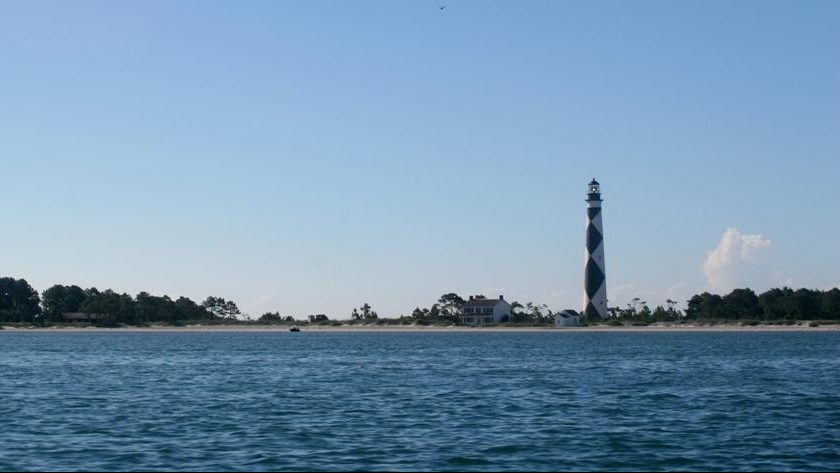A Conversation About the Importance of Including Cultural Landscapes in Hazard Mitigation Policy

This semester, the SE CASC Global Change Fellows have worked to create science expert videos that communicate the state of the science of various landscape conservation challenges related to global change in the southeastern United States. Students chose a topic of interest, interviewed an expert in the field, and created an informative video and blog post to share what they learned. The following video and summary were created by SE CASC Global Change Fellow, Rebecca Asser.
Cultural Landscapes and Policy

Written by: Rebecca Asser
Interviewee: Dr. Gavin Smith (Professor of Landscape Architecture and Environmental Planning, North Carolina State University)
Summary
Climate change is rapidly changing our environment and living conditions. Increased temperatures, drought, wildfire, and severity of storm events are forcing many communities to plan for a future away from their homes. As more and more people are becoming intimately affected by the aftermath of natural disasters, we are forced to face the question :
What is resilience and how will we reconcile our attachment to our homes and social networks as we experience the intensification of natural hazards?
The following conversation between Southeast Climate Adaptation Science Center Global Change Fellow Rebecca Asser and North Carolina State University Professor Dr. Gavin Smith analyzes these major questions from a landscape architecture and environmental planning lens with a focus on policy.
According to the Cultural Landscape Foundation, cultural landscapes are “landscapes that have been affected, influenced, or shaped by human involvement. A cultural landscape can be associated with a person or event. […] Collectively, cultural landscapes are works of art, narratives of culture, and expressions of regional identity” (tclf.org). Throughout history, humans have made their mark on the landscape, either to their benefit or detriment. With the increasing severity of natural hazards, many diverse historic landscapes are having to start developing resiliency plans. These plans should be put forth in order to perpetuate tactful change with multidimensional solutions in order to create a better outcome for the future. However, the ability to effectively develop and execute resiliency plans does not affect communities equitably; both in large metropolitan areas and rural counties.
In our conversation, Dr. Gavin Smith explores how we can better adapt our policy frameworks to help better address differing needs and maintain the integrity of the unique sociological ecosystem. Federal policies and practices, such as FEMA’s Federal Hazard Mitigation Grant Program, run far behind the needs of communities and require a concerted effort between many agencies. As we look forward, comprehensive governance and interdisciplinary collaboration must be brought to the forefront in order to promote pre-disaster planning that integrates the importance of cultural landscapes.
Additional Resources
The Cultural Landscapes Foundation https://tclf.org/places/about-cultural-landscapes
Outstanding example of community advocacy post-disaster :
Cantrell, LaToya. (2015). Broadmoor Lives On : How a Community Saved Their New Orleans Neighborhood. Huffington Post. https://www.huffpost.com/entry/broadmoor-lives-on-how-a-_b_8066388
McCoy, Emily and Lindsay Naylor (2021). An Open Space Plan for Cultural Landscapes, Resilience, and Growth in the Coastal Southeast. Planetizen.com LINK
Naylor, Lindsey, Virginia Fall, and Andrew Fox. 2020. The power of place in disaster recovery: Heritage-based practice in the post-Matthew landscape of Princeville, North Carolina. Parks Stewardship Forum 36(1): 128–136. https://escholarship.org/uc/psf LINK
Smith, Gavin. (2016). Remembrances of the Past, Concerns for the Future, and the Potential Resilience of a Southern Coastal Town. Southern Cultures. 22. 64-87. 10.1353/scu.2016.0022.
Smith, Gavin, Wendy Saunders, Olivia Vila, Samata Gyawali, Samiksha Bhattarai, and Eliza Lawdley. 2021. A Comparative Analysis of Hazard-Prone Housing Acquisition Programs in United States and New Zealand Communities. Special Issue on Managed Retreat and Environmental Justice. Journal of Environmental Studies and Sciences. Perspectives on Managed Retreat: Environmental Justice and Beyond. A.R. Siders and Jola Ajibade, Editors. DOI 10.1007/s13412-021-00689-y.
Smith, Gavin, Olivia Vila. 2020. A National Evaluation of State and Territory Roles in Hazard Mitigation: Building Local Capacity to Implement FEMA Hazard Mitigation Assistance Grants. Sustainability 12(10013): 1-18. doi:10.3390/su122310013.
- Categories:
